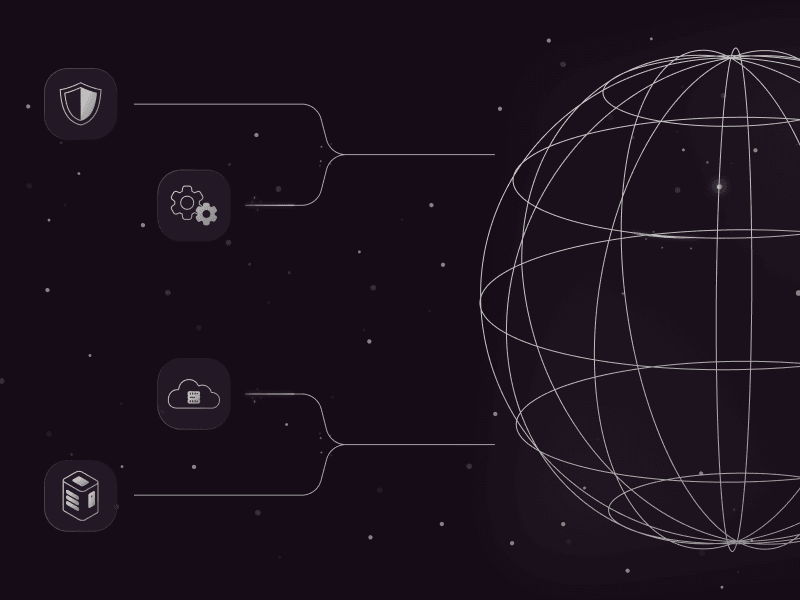Local Data for Global Operations in the Age of AI
- September 3, 2024
- 3 min read

The location where customer data is stored and processed has long been a critical consideration for businesses. Traditionally, data location was about optimizing latency and performance—the nearer the data is to the end user, the faster they get it.
However, with the introduction of new AI regulations in the US and EU, data location considerations have expanded to include compliance. Now, organizations must carefully plan where they store and process customer data to avoid regulatory breaches and the significant fines that come with them.
Fortunately, cloud providers have anticipated these regulatory shifts and developed solutions that allow enterprises to meet local compliance requirements without compromising their global operations. Read on to discover what local data is, why it matters for globally operating companies, and the strategies available to maintain local data storage while maximizing performance.
What Does Local Data Mean?
Local data means storing and processing data in the same area as the user that produced it. This can mean the data stays in the same state, country, or boundaries of an international organization like the EU.
There isn’t a single definition of what counts as “local” data. It depends on an organization’s needs and the regulations they have to comply with. For example, an EU-based company might be concerned with GDPR compliance, which requires them to store and process citizens’ data within the European Union (EU). For their purposes, the EU would count as local. But when it comes to performance, they might consider 500 km to be their upper limit for local, which equates to about 5 ms of latency. Enterprises today have to plan who they want to serve and where their customers are located to determine what local means for them.
Why Is Local Data Crucial for AI Regulations?
New regulations are popping up fast as AI continues to advance, disrupting industries and raising concerns about privacy, security, and ethical use. Many of these regulations require data to be processed or stored locally.
In late 2023, the US president released an executive order requiring US companies to share their models with the government. The EU followed with an AI Act that requires AI models to follow GDPR rules. So every model trained with EU data has to be hosted in the EU. Organizations must host their ML models in appropriate locations. For global businesses, this means splitting up centralized cloud processing and deploying local versions for each regulatory area where they want to operate.
How to Keep Data Local While Serving a Global User Base
Edge computing provides a simple solution to this seemingly complex problem. Edge is like a middle layer between the cloud and end-user devices. It provides all the convenience of cloud but processes data locally, closer to end users. Edge servers are located around the globe so that data from devices is processed quickly and locally.

Here’s a simplified illustration of how edge works. A user in Africa would have their AI data processed and stores within Africa on a local edge node. A user in North America would have their data processed on a North American edge node. Their data doesn’t get sent back to the origin server.

Edge makes regulatory compliance really simple for global companies. If European users’ data stays in Europe, GDPR compliance is assured. Companies can simply deploy their AI models using an edge network to adhere to ever-changing localized standards, while keeping their own operations as simple as if they were using a centralized cloud.
Gaining an Edge on Your Competition
Edge computing gives your company simplified compliance for global customers at a reasonable price, delivering the added bonus of low-latency performance. Companies that don’t leverage the edge stand to suffer financially, may give up on specific markets with complex regulations, and risk getting left behind when it comes to performance. The benefits apply to all data processing, whether that includes AI or not. This makes edge an obvious choice for futureproofing your business and getting ahead of the competition.
To summarize, edge delivers the following benefits to companies and their customers:
- Worldwide regulatory compliance with local laws, since user data never leaves the area of origin.
- Low-latency delivery, because user data travels to edge servers close to the user, cutting down on round-trip time.
- High-performance processing because workloads are split between multiple decentralized edge locations, resulting in fewer workloads per instance thanks to load balancing.
- Improved security because localized data travels less distance on public networks and potentially through fewer countries, with a reduced attack surface and fewer hops.
Edge Computing: A Simple Solution for Global Businesses
Constantly changing regulations are creating new challenges for global enterprises, especially when it comes to localized AI data laws. Distributed edge networks are the perfect tool to solve this challenge, and they deliver additional bonus benefits that put edge-enabled businesses ahead of their competition.
If your business operates in Europe, discover the benefits of using a European CDN provider in our dedicated article. Or explore why your cloud location matters for your business, and how sovereign cloud can solve some of the data location issues mentioned in this article.
Related articles
Subscribe to our newsletter
Get the latest industry trends, exclusive insights, and Gcore updates delivered straight to your inbox.






